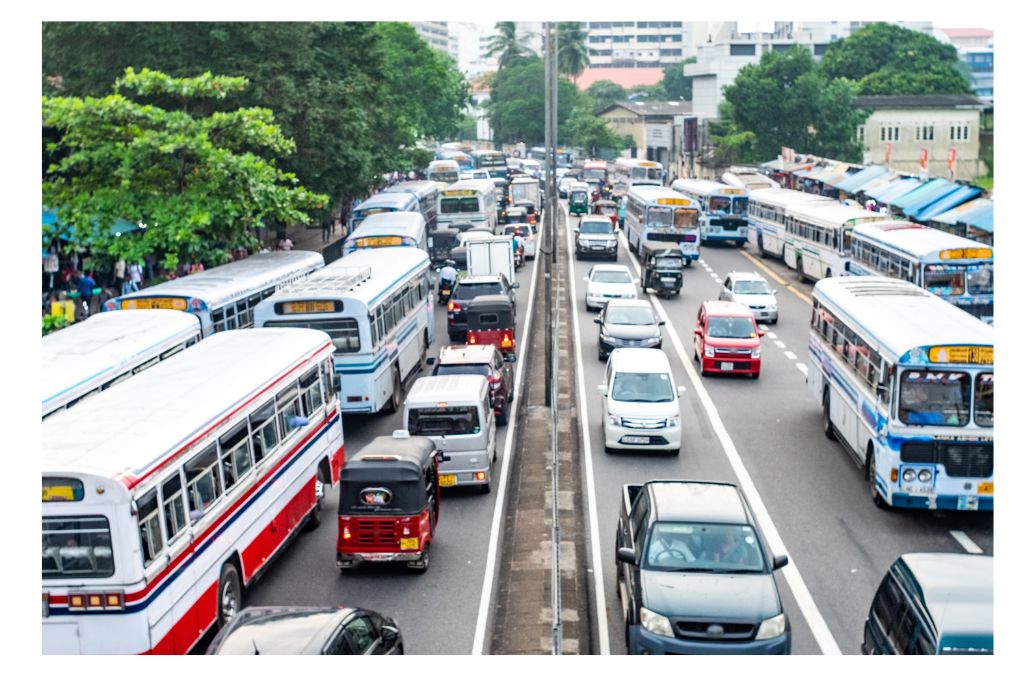Your Travel Planner: The Ultimate Beginners Guide

Imagine yourself in 2025, planning a getaway that’s as smooth as a gentle breeze, no stress, no chaos, just pure excitement. Many travelers dream of the perfect trip, but the process can quickly feel overwhelming with so many choices and details to manage. That’s where your travel planner comes in.
This guide is here to help you conquer every step, from setting travel goals and budgeting to picking the right destination and making smart bookings. I will show you how to build an itinerary, pack like a pro, and use the best tech tools for your journey.
Whether you’re dreaming of vibrant city adventures or peaceful beach escapes, your travel planner will give you the confidence to organize every detail. Ready to make your next trip unforgettable? Let’s get started, one simple step at a time.

Step 1: Setting Your Travel Goals and Budget
Taking the first step with your travel planner can set the tone for your entire adventure. Before you dive into booking flights or picking hotels, it’s important to get clear on your intentions and resources. This stage is all about building a strong foundation, so you can confidently move forward with your plans.

Defining Your Travel Purpose and Style
Start your journey by asking yourself: Why do you want to travel? Your travel planner should reflect whether you’re seeking relaxation on a beach, adrenaline-filled adventures, cultural discoveries, or cherished family time.
Match your travel style to your personality and goals. Are you a solo explorer, a group traveler, or someone who loves a touch of luxury? For example, cultural immersion in Kyoto offers a different vibe compared to unwinding on the beaches of Bali. When your travel planner aligns your interests with your style, every decision becomes easier and more enjoyable.

Using your Travel Planner To Establishing a Realistic Budget
A well-crafted budget is the backbone of your travel planner. Calculate the full scope of costs. Flights, accommodation, meals, activities, and travel insurance. Use budgeting tools or travel apps to get precise estimates.
To stretch your funds further, consider destinations that are both exciting and affordable. For inspiration, check out the Top 10 Budget International Travel Destinations for 2025. Incorporating these choices into your travel planner can help you make smarter financial decisions and travel more often.
Prioritizing Experiences and Must-Sees
Your travel planner should highlight what matters most to you. Research top attractions and hidden gems in your chosen destination, balancing bucket-list sights with your personal passions.

For instance, if wildlife safaris in Sri Lanka excite you more than city tours, prioritize them in your plan. Use lists or tables to organize your must-sees and nice-to-haves. This way, your travel planner keeps your trip focused and personal, ensuring you don’t miss out on experiences that make your journey unforgettable.
Allocating Funds for Flexibility and Emergencies
No matter how detailed your travel planner is, surprises can happen. It’s wise to set aside 10–15% of your total budget for unplanned expenses. Did you know that 30% of travelers face unexpected costs during their trips?
Include details about travel insurance and keep emergency contacts handy in your travel planner. This preparation gives you peace of mind and the flexibility to handle whatever comes your way, helping your adventure go as smoothly as possible.
Step 2: Choosing the Perfect Destination
Picking where to go is one of the most exciting steps in your travel planner. Once you’ve set your goals and budget, it’s time to dive into research and discover destinations that spark your curiosity. With the world opening up more each year, new opportunities and trends are available for travellers.

Researching Destinations for 2025
Start your journey by exploring potential destinations that align with your vision for the trip. Your travel planner should consider factors like safety, visa requirements, seasonal weather, upcoming local events, and overall accessibility.
Use resources such as official tourism websites, travel blogs, and government advisories. For example, Sri Lanka is making a comeback as a top spot and has recently been voted the top island to visit in 2025. Take your time gathering information, and let your interests guide you toward regions that excite you most.

👉 Need some inspiration, check out my top solo travel destinations for 2025
Comparing Destinations Based on Interests and Budget
Now, take a closer look at how each option fits your preferences and wallet. Your travel planner benefits from tools like cost-of-living indexes and comparison sites to weigh options side by side. Here’s a quick comparison:
| Region | Affordability | Trending for 2025 | Travel Style |
|---|---|---|---|
| Southeast Asia | High | Yes | Backpacking, Food |
| Eastern Europe | High | Yes | Culture, History |
If you’re seeking the best value, check out 2025’s Most Budget-Friendly Travel Destinations, According To Travelers for real experiences and tips. Whether you dream of a Southeast Asian adventure or a cultural escape in Eastern Europe, matching your itinerary to your budget is key.
Assessing Seasonality and Timing
Timing can make or break your travel experience. Your travel planner should map out the best seasons for each destination, weighing peak and off-peak travel periods. For example, visiting Japan during cherry blossom season is breathtaking, but crowds and prices soar. Visiting Sri Lanka? Check out the best time to travel to avoid the monsoons and see my month by month weather cheat sheet.
Consider shoulder seasons for fewer tourists and better deals. Research local festivals, holidays, and weather patterns to ensure the timing aligns with your interests and budget. Planning ahead helps you avoid surprises and get the most value from your trip.
Considering Travel Restrictions and Entry Requirements
Don’t overlook entry rules and travel restrictions, they can change quickly. Your travel planner should always check up-to-date protocols, visa changes, and special entry conditions. Use tools like the IATA Travel Centre and embassy sites to stay informed.
For 2025, digital nomad visas are on the rise, appealing to remote workers and long-term travelers. Make sure you have the right documents and prepare for any required paperwork. Being proactive keeps your journey smooth from start to finish.
Step 3: Booking Flights, Accommodation, and Transportation
Ready to turn your travel dreams into reality? This step in your travel planner is where the adventure truly begins. From snagging the best flight deals to locking in that perfect place to stay, every booking decision sets the tone for your journey. Let’s break down how your travel planner can guide you through every essential reservation, ensuring nothing falls through the cracks.

Finding and Booking the Best Flights
Flights are often the first big item in your travel planner. To find the best deals, compare flight aggregators like Skyscanner and Google Flights. Flexible dates can unlock huge savings, so use the “whole month” search to spot cheaper days. Incognito browsing prevents price hikes based on repeated searches, and fare alerts help you pounce on price drops.
Booking mid-week flights can save up to 20%. For example, flying out on a Tuesday rather than a Friday often means fewer crowds and better fares. Your travel planner should also account for baggage fees, layovers, and cancellation policies.
Quick tips for flights:
- Set fare alerts for your preferred routes.
- Compare basic vs. standard fares for extra value.
- Check budget airlines, but read the fine print.
- Always check the airlines own website for pricing. I have often found them to be cheaper than some third party websites and if you need to make any last minute changes, it’s often easier & cheaper to deal with the airline directly.
👉 Check out the latest deals with Qatar, voted the worlds best airline
Choosing Accommodation that Fits Your Needs
Your travel planner isn’t complete without a great place to stay. Start by deciding on your accommodation style: hotels for amenities, hostels for social vibes, vacation rentals for home comforts, or boutique stays for unique character. Use filters on platforms like Booking.com and Airbnb to match your preferences.
Reviews are your best friends. Look for recent feedback and pay attention to cleanliness, location, and included perks. Free cancellation is a must. 60% of travelers now prefer this flexibility in their bookings, so prioritize this in your travel planner.
Accommodation checklist:
- Compare prices across several booking platforms. Examples, booking.com & Expedia.
- Read reviews from the last six months.
- Check for amenities: Wi-Fi, breakfast, late check-out.
- Confirm the property’s cancellation policy.
Location matters: staying near public transport or city centers often saves both time and money. Your travel planner should also note any special requests or accessibility needs for a smoother stay.
Planning Local Transportation

Getting around is a key piece of your travel planner puzzle. Depending on your destination, options might include public transit, car rentals, ride-shares, or even walking tours. Research local transit passes, which can offer serious savings for tourists.
For city breaks, metro cards or unlimited bus passes are often cost-effective. Your travel planner should include estimated daily transportation costs, schedules, and maps. If you’re planning to rent a car, compare rental companies and book in advance for better rates.
Transportation tips:
- Download transit apps like Citymapper for real-time updates.
- Save digital copies of transit tickets in your travel planner.
Having a backup plan for late arrivals or transit strikes is smart. Your travel planner keeps all your options in one place, ensuring you’re never stranded.
Booking Activities and Experiences in Advance
Don’t let sold-out tours ruin your plans. Your travel planner should always include pre-booked activities for top attractions. From museums to guided tours, booking in advance helps you skip long lines and guarantees your spot, especially for popular sites like the Colosseum or Machu Picchu.
Use reputable platforms for reservations, and look for combo tickets to save money. Your travel planner can also help balance must-see sights with free time for spontaneous adventures. Viator and Getyourguide are good places to start

Tips for booking experiences:
- Reserve popular tours at least a month ahead.
- Double-check cancellation and refund policies.
- Add confirmation numbers to your travel planner.
Mix in both famous attractions and off-the-beaten-path gems. Your travel planner is your ticket to a trip that’s memorable and stress-free.
Organizing Travel Documents and Confirmations
Your travel planner should act as your central hub for all documents. Compile passports, visas, insurance, and booking confirmations in both digital and paper form. Travel apps like TripIt or Google Drive make it easy to store and access these details on the go.
Create a checklist of required documents, including vaccination records if needed. Your travel planner should also include emergency contacts and embassy info for extra peace of mind.
Travel document essentials:
- Digital copies of all IDs and bookings.
- Printed backup in a safe place.
- Emergency contacts and insurance details.
Before departure, double-check that everything is in your travel planner. This preparation means you won’t be scrambling at the last minute, letting you focus on the excitement ahead.
Step 4: Building Your Personalized Itinerary
Designing the perfect trip starts with building a personalized itinerary that reflects your interests, pace, and priorities. With your travel planner, this process becomes both fun and manageable. Instead of feeling overwhelmed by choices, you can break your trip into clear, actionable steps and enjoy the journey from start to finish.

Mapping Out Your Daily Schedule
The heart of your travel planner is a smart daily schedule. Start by listing the must-see attractions for each day, but remember to leave space for relaxation and exploration. For instance, a three-day Paris itinerary could include the Louvre and Eiffel Tower on day one, a food market stroll and Montmartre on day two, and a leisurely Seine cruise on day three.
Balance is key. Use your travel planner to avoid overscheduling, which can lead to fatigue and missed opportunities. Consider adding blocks of free time, so you can wander through a park or linger in a café. The beauty of a well-structured itinerary is that it keeps you on track while allowing for those spontaneous moments that make travel unforgettable.

Integrating Local Culture and Unique Experiences
No trip is complete without immersing yourself in the local culture. With your travel planner, you can easily add authentic experiences like food tours, festivals, or bustling markets. For example, joining the Holi festival in India or a tapas crawl in Spain can turn a simple trip into a life-changing adventure.
Did you know 70% of travellers actively seek out genuine cultural encounters? If you’re looking for inspiration, check out Siem Reap in Cambodia or an experience focused stay in Kandy Sri Lanka. Remember, your travel planner should reflect what excites you most about the world.
Factoring in Travel Time and Logistics
Time management is a crucial part of your travel planner. Use mapping tools like Google Maps or Rome2Rio to estimate how long it takes to get from place to place. For instance, if you’re exploring Rome, allow for buffer time between the Vatican and Colosseum, especially when relying on public transit.

A helpful strategy is to cluster activities by neighborhood or region. This minimizes travel time and maximizes enjoyment. Always plan for the unexpected, delays, traffic, or weather changes. Your travel planner should give you the confidence to adapt while still making the most of every hour on your trip.
Sample Itinerary Templates for Beginners
To help you get started, here are simple templates you can copy into your travel planner:
- City Break:
- Day 1: Arrival, orientation walk, local dinner
- Day 2: Main attractions, museum, evening market
- Day 3: Relaxing activity, shopping, departure
- Adventure Trip:
- Day 1: Gear check, guided hike
- Day 2: Outdoor adventure (rafting, biking), local food
- Day 3: Scenic viewpoint, cultural site, farewell dinner
- Cultural Tour:
- Day 1: Historical center, guided tour
- Day 2: Art gallery, food tour
- Day 3: Local festival, souvenir shopping
Downloadable checklists and printable planning sheets can be invaluable additions to your travel planner, ensuring nothing is left to chance and every detail is covered.
🌍 For Costa Rica sample itineraries click here
✅ For a Sri Lanka sample itinerary click here
Step 5: Packing and Preparing for Departure

Packing and prepping for your trip is where your travel planner truly shines. Let’s break down how to pack smart, stay healthy, and leave home ready for anything.
Creating a Packing List Tailored to Your Trip
Every great journey starts with a solid packing list in your travel planner. Begin by jotting down the essentials: clothes, toiletries, electronics, and vital documents. Consider your destination’s climate and activities when choosing what to bring.
For a tropical getaway, think lightweight clothing, swimwear, and sunscreen. Heading to a cold climate? Layer up with thermals, jackets, and gloves. Don’t forget universal items: chargers, adapters, and a reusable water bottle.

Did you know 45% of travelers forget at least one essential item? Avoid that pitfall by using a checklist. Many travel apps let you customize lists based on your trip, ensuring nothing gets left behind.
Packing Smart: Tips for Beginners
Smart packing is a game-changer in your travel planner. Start with rolling clothes instead of folding. It will save space and reduce wrinkles. Packing cubes are your secret weapon for staying organized.
Always check your airline’s weight and size restrictions to avoid surprises.
Here’s a quick comparison table:
| Packing Method | Pros | Cons |
|---|---|---|
| Rolling | Saves space, less wrinkling | Not ideal for bulky items |
| Folding | Good for formal wear | Takes more space |
| Packing Cubes | Organization, easy access | Adds a bit of weight |
Remember, your travel planner is about making things easier, not harder. Pack versatile items you can mix and match instead of overstuffing your bag.

Travel Health and Safety Preparations
Health and safety are must-haves in your travel planner. Check if you need vaccinations or special medications for your destination. Pack a basic first aid kit with bandages, pain relievers, and any prescription meds.
Travel insurance is a must. It gives peace of mind in case you need medical care abroad. List emergency contacts in your phone and keep a paper copy just in case.
If you’re heading somewhere high-altitude, like Peru, prepare for altitude sickness with proper medication. Review travel advisories and register with your embassy if necessary for added safety.
Managing Money and Expenses on the Go

Money management can make or break your trip. Add these tools to your travel planner for a stress-free experience:
- Currency apps: Instantly convert prices with XE or Currency Converter Plus.
- Travel cards: No-fee cards like Revolut or Wise help avoid hidden charges.
- Budgeting apps: Track spending and set limits with apps.
With your travel planner, you’ll always know where your money goes. These tools help you stick to your budget and avoid surprises.
Whether you’re dreaming of vibrant city adventures or peaceful beach escapes, your travel planner will give you the confidence to organize every detail. Happy Travels 😀


